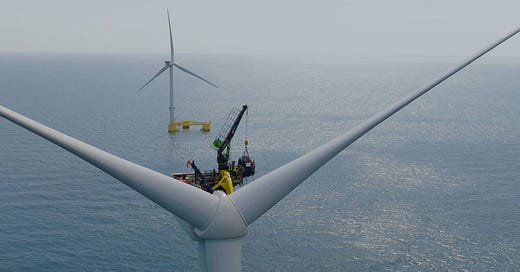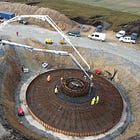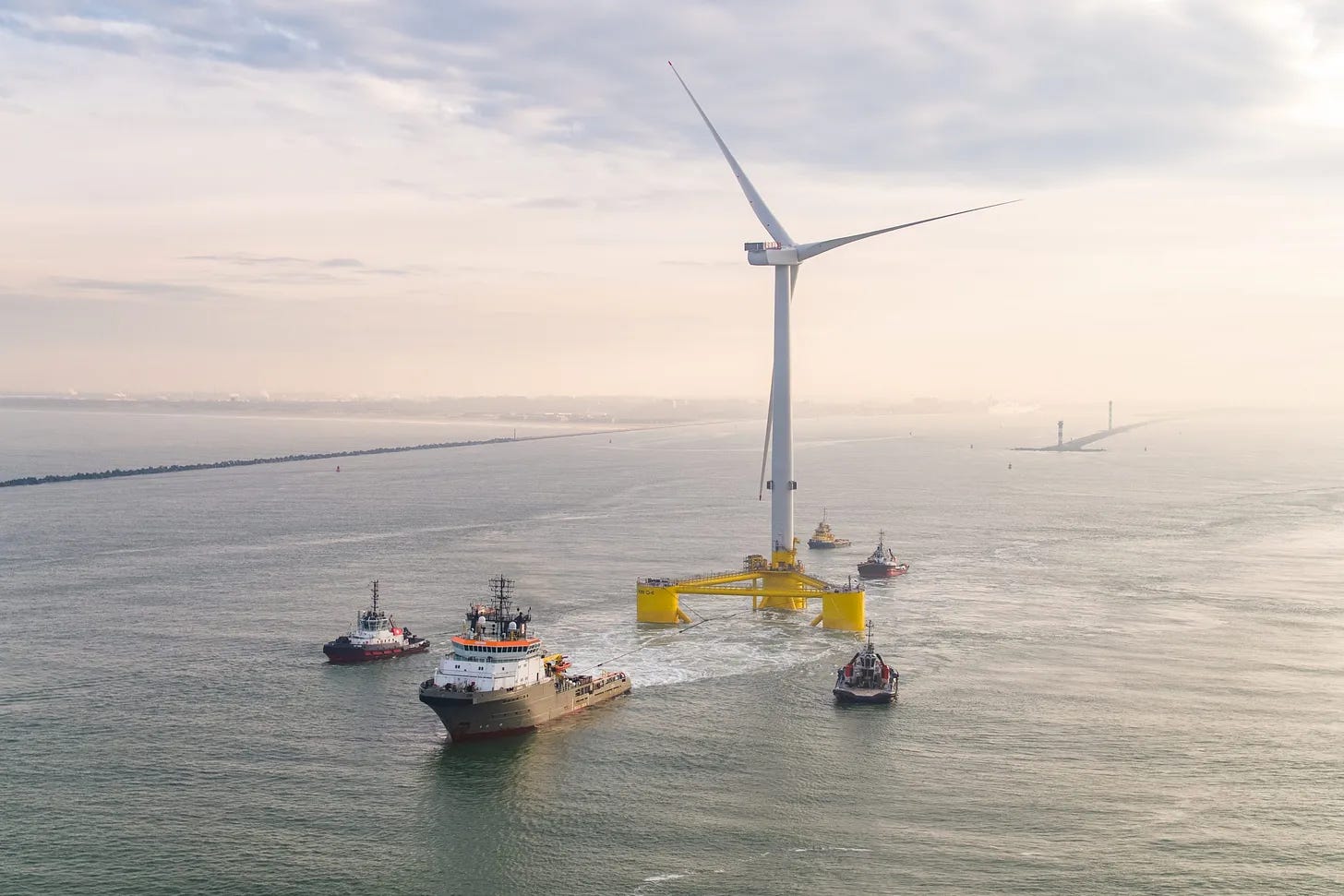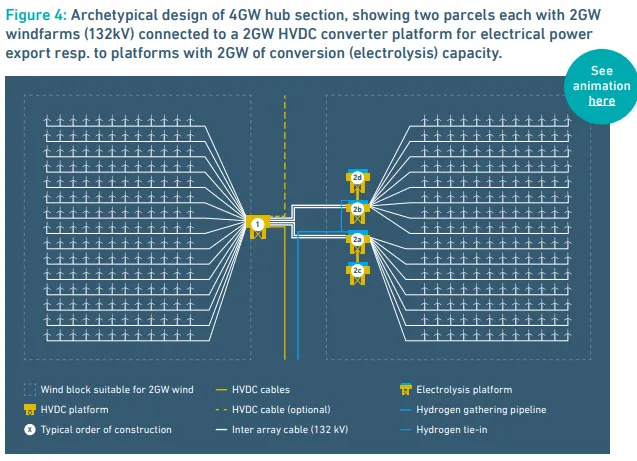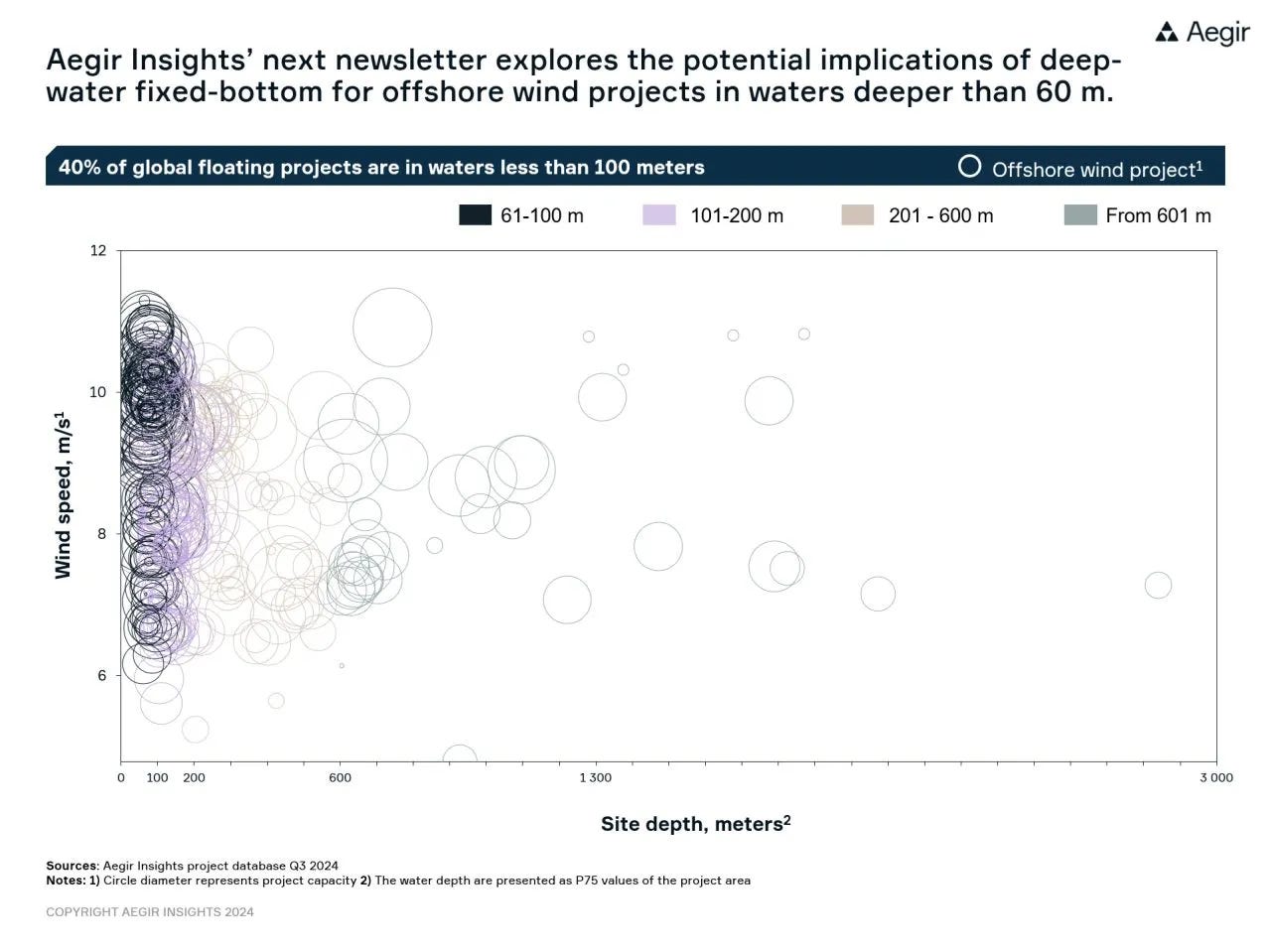Windletter #91 - First offshore major corrective maintenance in a floating wind turbine
Also: Acciona plans a 3 GW wind farm in Australia, Offshore Energy Hubs, Nordex presents a 200-meter hybrid tower, and more.
Hello everyone and welcome to a new issue of Windletter. I'm Sergio Fernández Munguía (@Sergio_FerMun) and here we discuss the latest news in the wind power sector from a different perspective. If you enjoy the newsletter and are not subscribed, you can do so here.
Windletter is sponsored by:
🔹 Tetrace. Specialized services in operation and maintenance, engineering, supervision, inspection, technical assistance, and distribution of spare parts in the wind sector. More information here.
🔹 RenerCycle. Development and commercialization of solutions and specialized services in the circular economy for renewable energies, including comprehensive dismantling of wind farms and waste management, refurbishment and sale of components and wind turbines, management and recycling of blades and others. More information here.
Windletter está disponible en español aquí
The most read from the latest edition has been: the video of the wind turbines destroyed by a typhoon in China, the video of the hub access in a Nordex N90, and the article about the tornado that destroyed several wind turbines in the United States.
Additionally, last week we had Rafa Jimenez Toña as a guest contributor, who talked to us about onshore wind turbine foundations.
Now, let's move on to this week's news, which comes packed with lots of updates.
🛠️ First major corrective maintenance on a floating wind farm
In recent times, we have learned about several major corrective maintenances (replacement of a main component) that have had to be carried out on some of the pioneering floating wind farms worldwide.
This was the case with Hywind Scotland, which had to tow its 5 SWT-6.0-154s to port, and also with Kincardine, which had to do the same with at least some of its Vestas V164-9.5 MWs.
As you can imagine, these maneuvers are expensive and delicate, as they involve disengaging the wind turbine from the mooring systems and disconnecting the power cables to tow them to port, where the component can be replaced in a controlled environment. The problem is that when the wind turbine is returned to its final position, the reverse process has to be done.
We already mentioned back then, in Windletter #37, that these maneuvers would be different in the future, that these major corrective maintenances would be carried out directly offshore.
Well, that future has arrived.
The Kincardine wind farm has successfully completed the replacement of an electric generator, carried out for the first time on a floating wind turbine offshore. It was done with the help of the company LiftOff, which provided the crane that, once mounted on the nacelle, was able to carry out the component replacement.
These types of cranes, being installed directly on the nacelle, eliminate the problems that occur when using a crane from a vessel. Since both the floating turbine and the ship move differently in the water, it can be difficult to perform repairs accurately. By placing the crane on the turbine, the uncoordinated movement between the turbine and the ship is avoided.
Here is a video of the maneuver carried out in Kincardine:
According to LiftOff, the sequence was as follows:
Vestas removes the anchor points of the damaged electric generator.
Using the crane, the generator is lowered to the floating platform (this will not be possible with larger components).
The OSV (Offshore Service Vessel), with its own crane, picks up the damaged generator and places the new one on the floating platform.
The new generator is lifted with the crane and installed.
In the process, the most critical aspect is that the OSV can safely hoist and lower the generators onto the floating platform, due to the relative movements we explained earlier. Weather conditions are crucial for this type of maneuver.
This first corrective maintenance is just an initial experience of an emerging technology, but it is clear that solutions involving towing wind turbines to port make little sense for the future when we have floating wind farms at a commercial scale.
And what happens when the component that needs to be replaced is a blade or a part that cannot be stored on the floating platform?
Well, solutions are also being sought for that, such as the case of Solve Wind, the joint venture between Esteyco and Liftra, which is developing these types of solutions.
_
🌬️ Acciona plans to install a 3 GW onshore wind farm in Australia
The Spanish company Acciona Energía wants to install around 400 wind turbines in the Bellwether project in Western Australia, totaling 3 GW of capacity. This would make it the largest onshore wind farm in the world (as always, with China's permission).
It is a medium to long-term development. In fact, the wind farm is still in the feasibility and preliminary study phase, which includes the essential wind resource measurement. Construction wouldn't start, at best, until 2028.
Acciona has a website where it publishes information about the project and its progress, which I think is a remarkable exercise in transparency.
On that same website, there are some informative posters about the project and also a map that shows the affected area, which interestingly leaves a small airstrip for light aircraft surrounded by wind turbines.
If the wind farm is ever built, it's possible that the 400 wind turbines may not be awarded to a single OEM, as we saw with the SunZia project, which you can read about below.
_
_
💧 Offshore Energy Hubs: Generating hydrogen in offshore wind farms
Through Mathias Kjærgaard Christensen, I came across this discussion paper that talks about Offshore Energy Hubs, offshore wind farms designed and optimized from the planning stage to generate both electricity and hydrogen.
It’s a forward-looking exercise, and honestly, it’s hard to imagine a time horizon in which we could see something like this. But it's a very interesting exercise where concepts as appealing as the following are proposed:
As you can see, the diagram describes an offshore wind farm with 4 GW of installed capacity but with only 2 GW of capacity to export electricity to the grid and another 2 GW of electrolyzer capacity. This way, the operator of the wind farm could choose between selling electricity to the grid, producing hydrogen, or both, depending on the wind conditions and the price of electricity.
You can access the project website here and the full discussion paper at this link.
_
🏗️ Nordex presents a 200-meter hybrid tower for its N175/6.X
Nordex is expanding its portfolio of towers for the N175/6.X and has just introduced one that reaches up to 200 meters in hub height. It is a hybrid concrete-steel tower aimed primarily at markets such as Germany, Finland, and Sweden.
As you already know, greater height allows for access to better wind resources (although it depends on the location) and also of higher quality (that is, with less turbulence).
The N175/6.X is currently offered with tubular steel towers for hub heights of 112 meters, 142 meters, and 162 meters, as well as with hybrid towers of 179 meters and, soon, 200 meters.
Along these lines, Nordex has just received the IECRE Provisional Type Certificate from TÜV SÜD, a certification that is often considered a prerequisite in international procurement processes.
Additionally, Nordex has also released a commercial video presenting this machine, which I think is worth watching.
_
🇮🇳 Senvion India presents a 4.2 MW wind turbine with a 160-meter rotor
Many of you may remember the German turbine manufacturer Senvion, whose European business and maintenance contracts (around 9 GW) were acquired by Siemens Gamesa in 2019 after Senvion declared bankruptcy.
Senvion's Indian business, meanwhile, was taken over by the Saudi company Alfanar as an independent business in 2021, and since then it has operated in the country with what could be considered a low profile.
Well, now Senvion has just introduced the 4.2M160, a DFIG machine with 4.2 MW of power, a 160-meter rotor diameter, and tower heights of up to 140 meters. The new machine has been developed in collaboration with RE Technologies, a German company also owned by the Alfanar Group.
Additionally, in the press release, Senvion assures that it is a turbine "Made in India for India and the World," which means they do not rule out selling it in other international markets. You can view the technical sheet here. Interestingly, the sheet does not follow Senvion's branding.
This presentation comes just after the company announced the commissioning of its 3.1M130 prototype, with 3.1 MW of power and a 130-meter rotor, which they describe as a natural evolution of Senvion's 2XM series.
_
📏 How deep can we take fixed-base offshore wind?
I loved the analysis published in Aegir Insights' newsletter. The study shows what it would mean to build fixed-base wind farms at depths greater than current standards, which are around 60 meters deep.
In fact, something very striking is that 40% of global floating wind developments are in depths below 100 meters. And I repeat, floating.
So, considering that the technological development of floating wind is progressing more slowly than perhaps expected, one solution could be to use deeper foundations (>60 m) to unlock locations that were previously considered viable only for floating wind.
The following map shows the viable maritime area for fixed-base offshore wind if the foundations were up to 60 meters, up to 80 meters, and up to 100 meters deep.
According to Aegir Insights' calculations, simply by considering that the foundations could reach depths of 100 meters, as much as 50 GW could be unlocked just in the UK and Ireland.
Thank you very much for reading Windletter and many thanks to Tetrace and RenerCycle, our main sponsors, for making it possible. If you liked it:
Give it a ❤️
Share it on WhatsApp with this link
And if you feel like it, recommend Windletter to help me grow 🚀
See you next time!
Disclaimer: The opinions presented in Windletter are mine and do not necessarily reflect the views of my employer.


